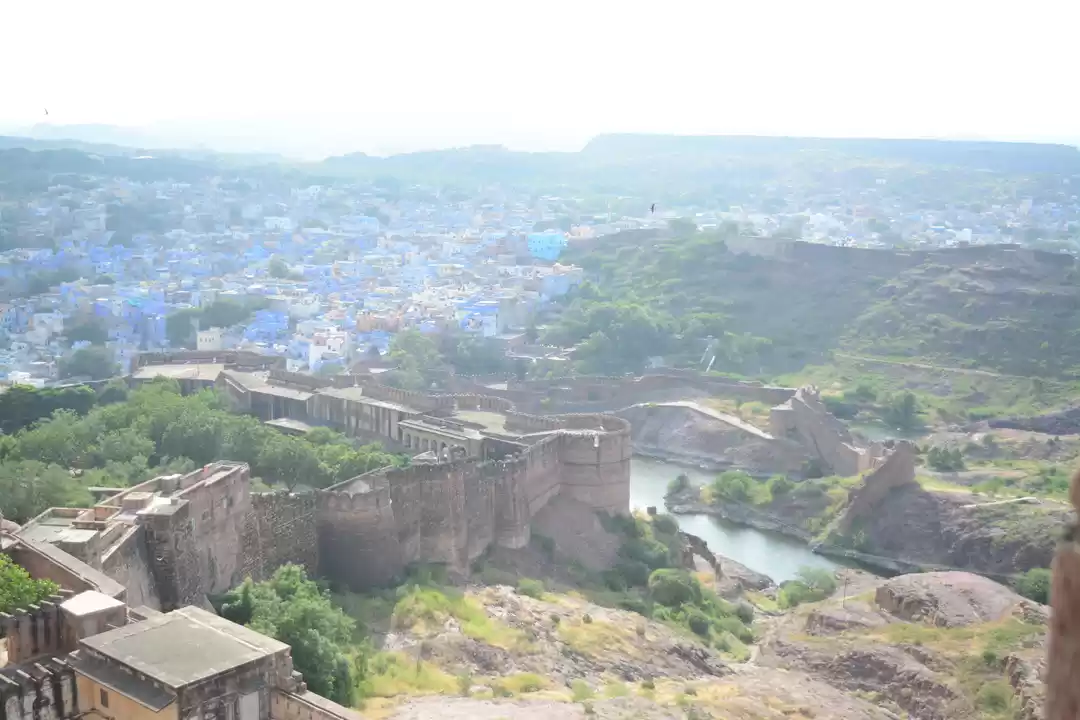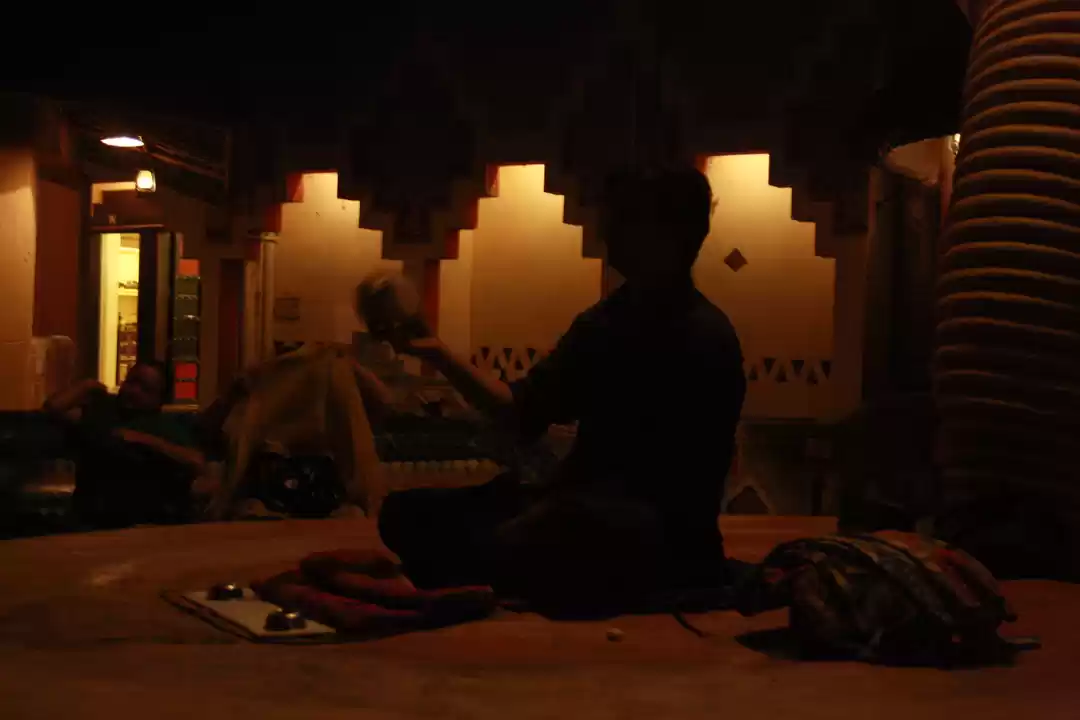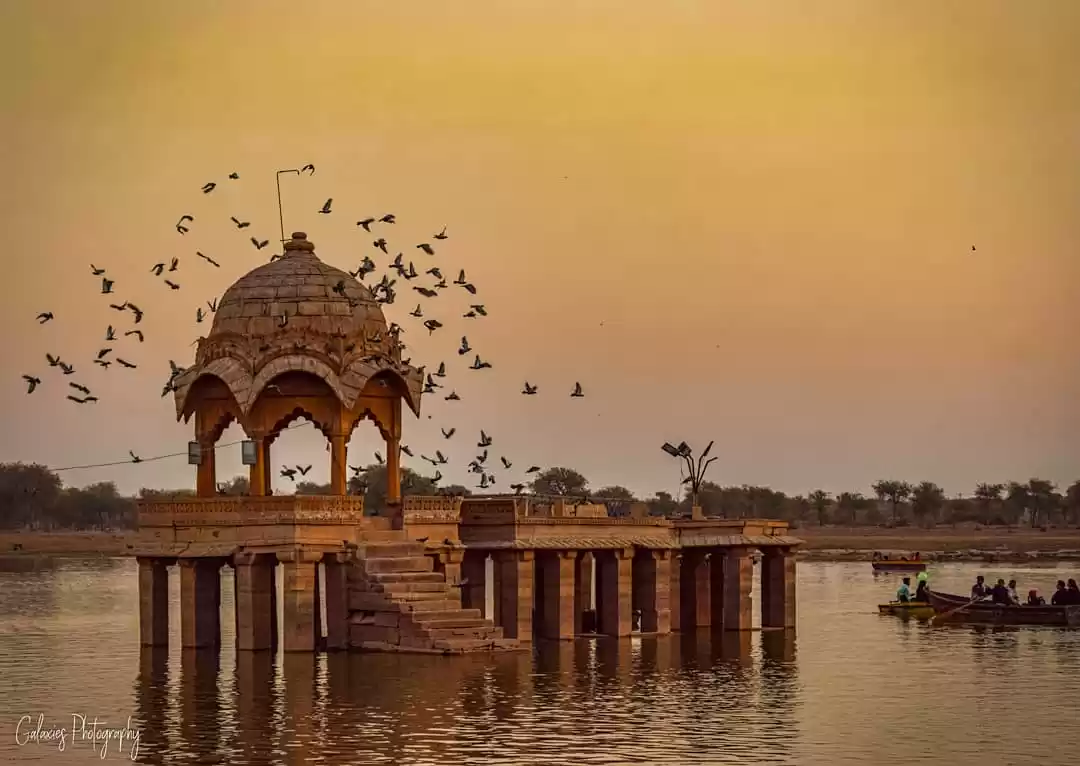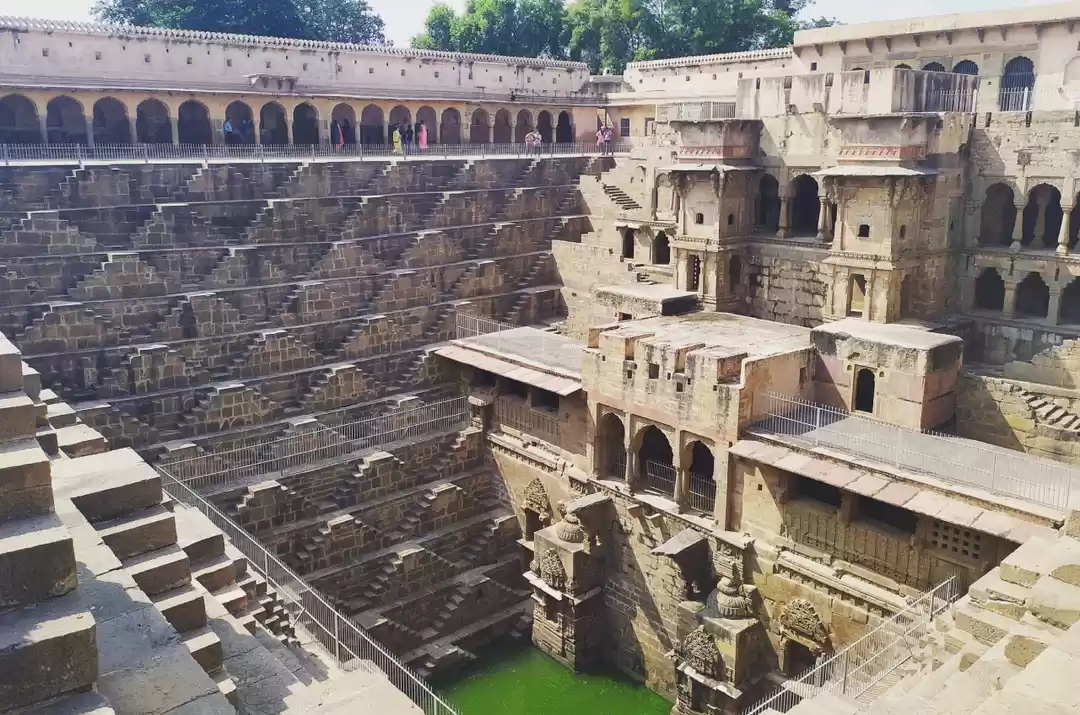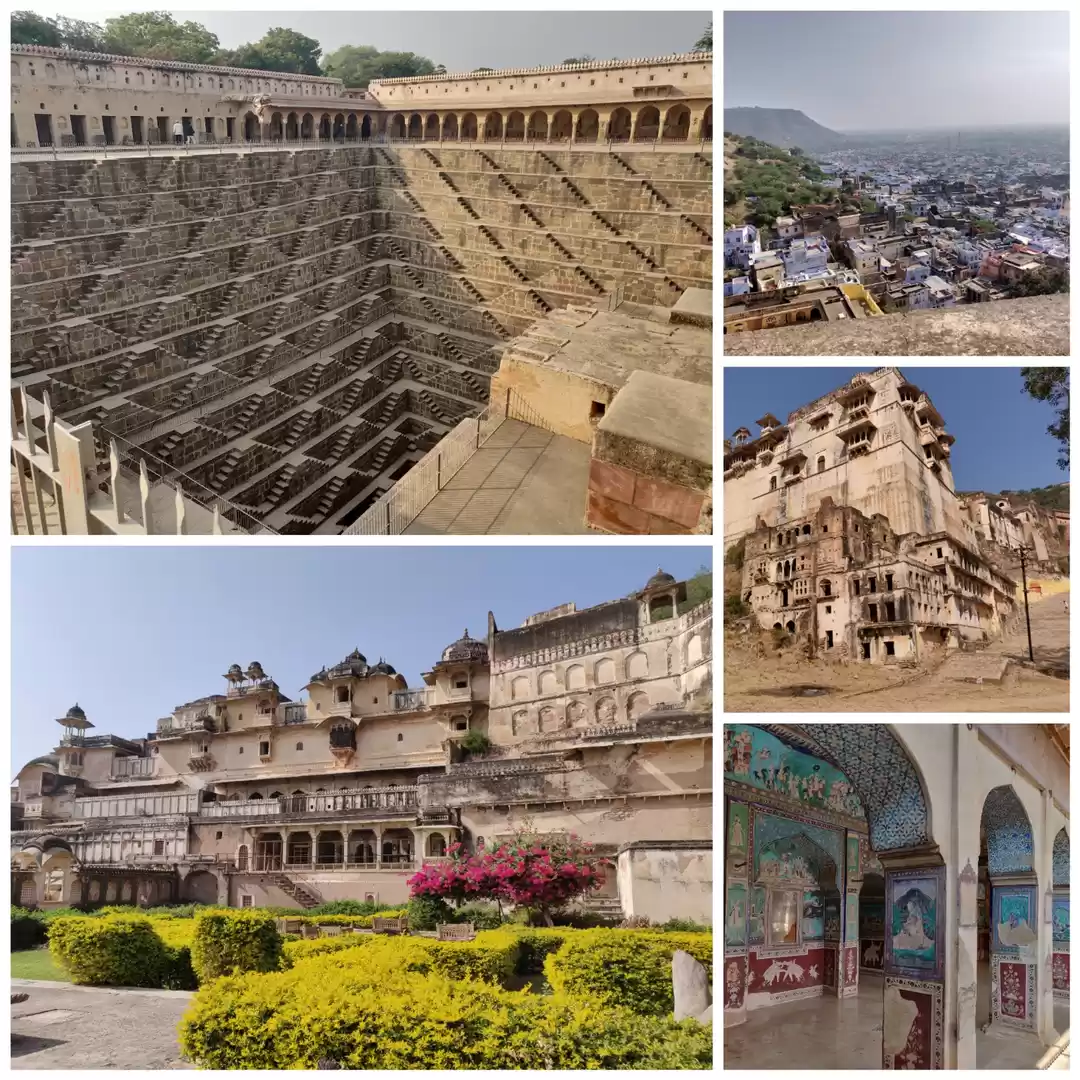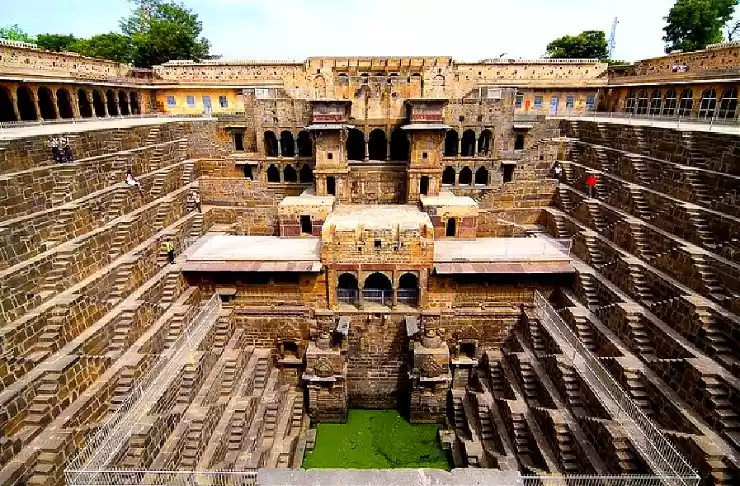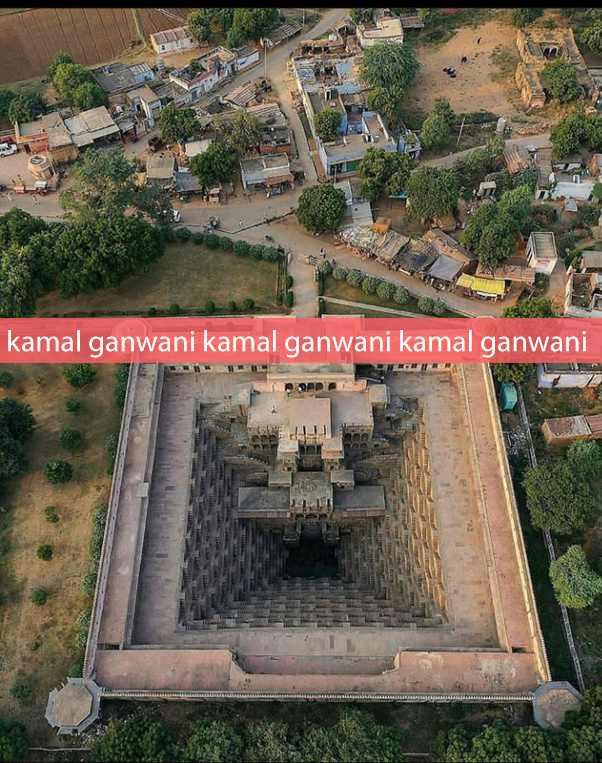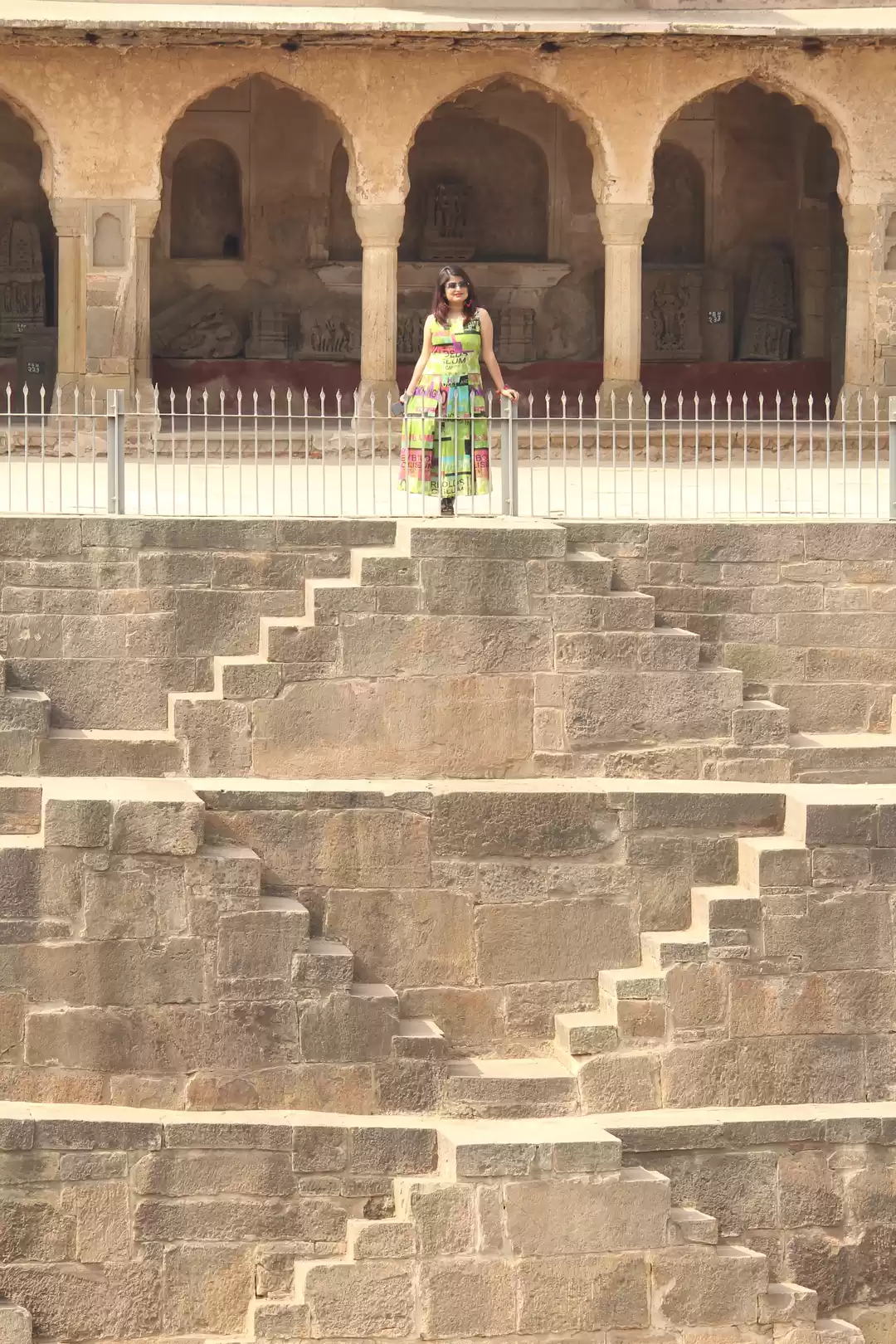If you are looking for a unique and fascinating attraction in Rajasthan, you should not miss Chand Baori in Ranthambore. Chand Baori is a stepwell, a water structure that consists of a series of steps leading to a reservoir at the bottom. Stepwells are an ancient and ingenious way of conserving water and providing a cool refuge from the heat in the arid regions of India.
Chand Baori is one of the oldest and most popular stepwells in Rajasthan. It was built by King Chanda of the Nikumbha Dynasty in the 9th century AD. It is also one of the largest and most beautiful stepwells in the world, with more than 3,500 steps and 13 storeys. It showcases the remarkable architectural expertise and artistic talent of the Rajasthani people.
In this article, we will explore more about Chand Baori’s history, architecture, significance and location. We will also tell you how to reach Chand Baori and what other attractions you can visit nearby. By the end of this article, you will be amazed by the beauty and grandeur of Chand Baori and may want to visit it in person or virtually.
History of Chand Baori
Chand Baori was built by King Chanda of the Nikumbha Dynasty, who ruled over the Abhaneri region from the 8th to the 10th century AD. He was a powerful and benevolent ruler who patronized many temples and monuments in his kingdom. He commissioned Chand Baori as a water source and a social gathering place for his subjects.
According to legend, Chand Baori was built overnight by ghosts or spirits at the king’s request. He wanted to create a magnificent structure that would impress his people and visitors. He also wanted to ensure that there was enough water for his people during the dry seasons. The ghosts or spirits agreed to build Chand Baori on one condition: that no one should see them working. If anyone did, they would stop building and leave the structure incomplete.
The king agreed to this condition and ordered his people not to go near Chand Baori at night. However, one night, a curious man decided to sneak out and see what was happening at Chand Baori. He was astonished to see thousands of ghosts or spirits working tirelessly on the stepwell. He could not resist shouting out loud in awe and admiration. As soon as he did, the ghosts or spirits vanished and never returned. That is why Chand Baori has an uneven number of steps on one side, as it was left unfinished by the ghosts or spirits.
Chand Baori witnessed many historical events and changes over the centuries. It was invaded and plundered by foreign invaders, such as Mahmud Ghazni and Muhammad Ghori. It was renovated and restored by various rulers, such as Pratihara King Mihir Bhoj, Mughal Emperor Akbar and British Governor-General Lord Curzon. It was also nominated as a UNESCO World Heritage Site in 2014 for its cultural and historical value.
Architecture of Chand Baori
Chand Baori is an architectural wonder that displays the exquisite geometry and symmetry of Rajasthani design. It has a square shape with steps on three sides that lead to the water reservoir at the bottom. The fourth side has a three-storeyed pavilion with intricately carved windows, galleries and balconies that were meant for the royal family to sit in.
The steps of Chand Baori are arranged in an inverted V-shape pattern that creates a stunning visual effect with the play of light and shadow on them. The steps are narrow and steep, making it difficult to climb up or down without losing balance. The depth of Chand Baori is about 70 feet, which is equivalent to a seven-storeyed building.
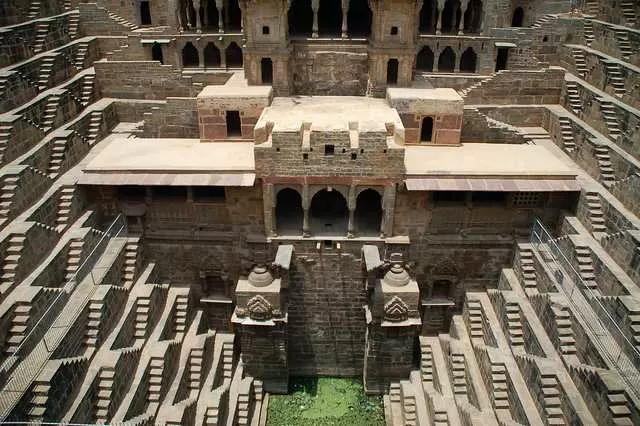
The pavilion of Chand Baori is adorned with beautiful carvings and sculptures that depict various Hindu gods and goddesses, such as Ganesha, Shiva, Vishnu and Durga. The pavilion also has a dance chamber and a secret tunnel that were used by the king or his soldiers during wars or emergencies.
Chand Baori is one of the finest examples of ancient Indian sculptural style and skill. It showcases the artistic creativity and mathematical precision of the Rajasthani people who built it without any modern tools or technology.
You may also like to read: Royals of Rajasthan: Sariska Palace & The Step Well of Abhaneri (AKA Chand Baori)
Significance of Chand Baori
Chand Baori was not only a water source but also a cultural and religious site for the locals and royals. It served as a place where people could gather, socialize, worship and celebrate. It also provided a cool and refreshing escape from the scorching heat of Rajasthan.
Chand Baori was a symbol of the prosperity and power of the Nikumbha Dynasty. It was a testament to their engineering and artistic achievements. It was also a source of pride and inspiration for the Rajasthani people who admired its beauty and grandeur.
Today, Chand Baori is no longer in use but still attracts many visitors from around the world who are fascinated by its history and architecture. It has been featured in many films and documentaries, such as The Fall, The Dark Knight Rises and Paheli. It has also been praised by many celebrities and influencers, such as Will Smith, Drew Barrymore and Lisa Ray.

Location of Chand Baori & How To Reach
Chand Baori is located in Abhaneri village on the Jaipur-Agra National Highway (NH-11). It is about 95 km from Jaipur and 250 km from Agra. It is easily accessible by road, rail or air.
To reach Chand Baori by road, you can take a car, bus or taxi from Jaipur or Agra. The route from Jaipur to Chand Baori takes you through Dausa, Sikandra Mod, Goolar Chauraha and finally Abhaneri.
The route from Agra to Chand Baori takes you through Bharatpur, Mahua, Sikandra Mod and Abhaneri.
To reach Chand Baori by rail, you can take a train to the nearest station, which is Bandikui. Bandikui is about 10 km from Abhaneri. From Bandikui, you can take a taxi or an auto-rickshaw to Chand Baori.
To reach Chand Baori by air, you can take a flight to the nearest airport, which is Jaipur. Jaipur is about 95 km from Abhaneri. From Jaipur, you can take a car, bus or taxi to Chand Baori.
The best time to visit Chand Baori is during winter (October to March) when the weather is pleasant and suitable for sightseeing. You can avoid the summer (April to June) when the temperature can rise up to 45 degrees Celsius. You can also avoid the monsoon (July to September) when the rainfall can make the roads slippery and muddy.
Best Places to Stay Near Chand Baori Stepwell
Chand Baori stepwell is a stunning and historic attraction in Abhaneri village, Rajasthan. If you are planning to visit this amazing monument, you may want to stay in one of the nearby hotels or resorts that offer comfortable and convenient accommodation. Here are some of the best places to stay near Chand Baori stepwell, based on the location, rating, price and reviews of the guests.
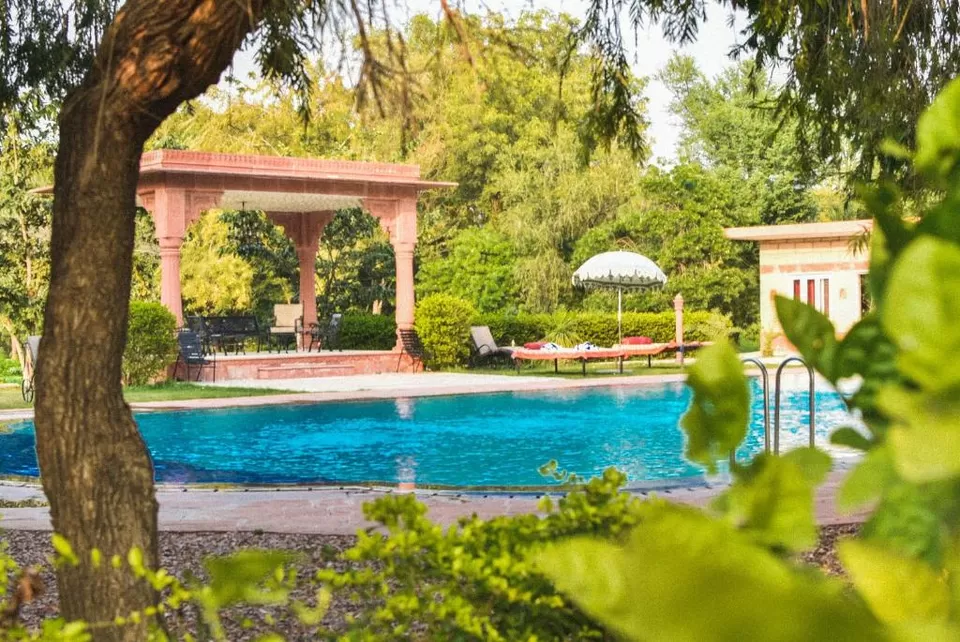
Umaid Palace - An Organic Retreat
This is a heritage hotel that is located about 17 km from Chand Baori stepwell. It is spread across 20 acres of greenery and offers a peaceful and relaxing stay. It has spacious and elegant rooms, a restaurant, a swimming pool, a spa and a garden. It also organizes cultural programs, camel safaris and village tours for the guests. The property costs about $50 per night.
To book your stay at the property click here.
Utsav Camp Sariska
This is a luxury camp that is located about 32 km from Chand Baori stepwell. It is situated in the Sariska Tiger Reserve and offers a thrilling and adventurous stay. It has cozy and comfortable tents, a restaurant, a swimming pool, a bonfire and a library. It also organizes wildlife safaris, birdwatching tours and nature walks for the guests. It costs about $100 per night.
To book your stay at the property click here.
Prime Neelkanth Forest Retreat
This is a boutique resort that is located about 34 km from Chand Baori stepwell. It is nestled in the Aravalli hills and offers a scenic and serene stay. It has modern and stylish rooms, a restaurant, a swimming pool, a spa and a terrace. It also organizes yoga sessions, cycling tours and cultural events for the guests. It costs about $80 per night.
To book your stay at the property click here.
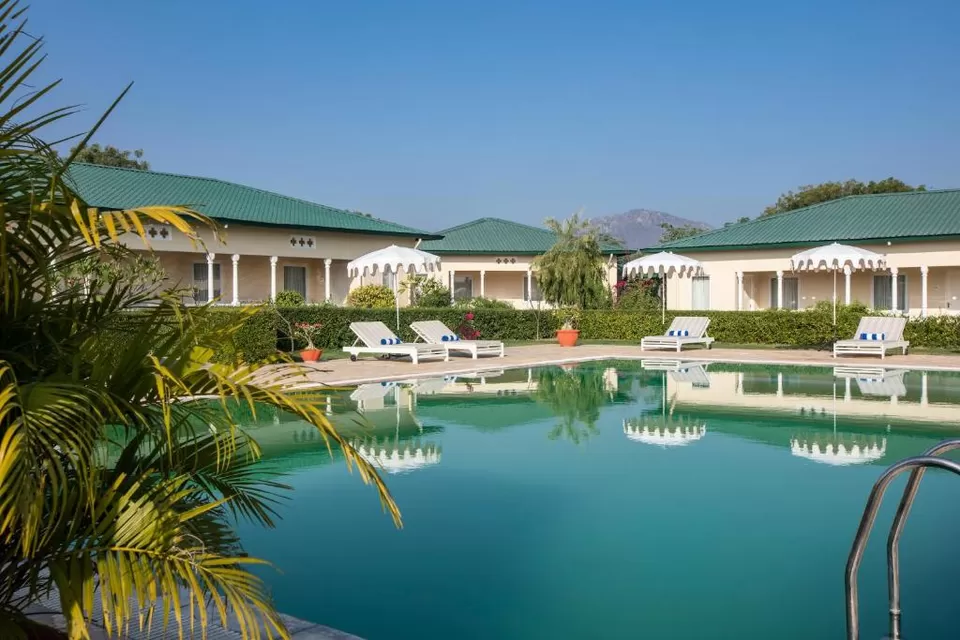
Surya Villa Resort
This is a budget hotel that is located about 19 km from Chand Baori stepwell. It is surrounded by greenery and offers a fresh and friendly stay. It has simple and clean rooms, a restaurant, a garden and a playground. It also organizes temple visits, puppet shows and folk dances for the guests. It costs about $20 per night.
To book your stay at the property click here.
Sariska Manor Luxury Cottages Tehla
It is a boutique jungle lodge located only 1 km from Sariska Tiger Reserve, and about 32 km from Chand Baori Abhaneri in Rajasthan. The property has 26 rooms across seven quaint cottages inspired by the colonial-era British hunting lodges, with slanting roofs, wide verandas, stone patios and wooden pillars. The lodge offers Indian and Continental food, safaris, and a TV lounge for guests.
To book your stay at the property click here.
Places to Visit Near Chand Baori
There are many other attractions that you can visit near Chand Baori that will make your trip more enjoyable and memorable. Here are some of them:

Harshat Mata Temple:
This is a 9th-10th century temple dedicated to Harshat Mata, who is considered to be the goddess of joy and happiness for the whole village. The temple is located next to Chand Baori and has beautiful carvings and sculptures on its walls and pillars.

Bhangarh Fort:
This is a 17th century fort that is famous for being one of the most haunted places in India. The fort is located about 25 km from Abhaneri and has many legends and stories associated with it. It is said that no one can stay in the fort after sunset without facing paranormal activities.

Mehandipur Balaji Temple:
This is a temple dedicated to Lord Hanuman, who is also known as Balaji. The temple is located about 30 km from Abhaneri and is known for its miraculous healing powers. It is said that people who are possessed by evil spirits or suffer from mental illnesses can be cured by visiting this temple.

Keoladeo National Park:
This is a national park that is famous for being one of the best bird sanctuaries in India. The park is located about 80 km from Abhaneri and has more than 370 species of birds, including migratory ones. It is also home to many other animals, such as deer, antelope, monkeys and crocodiles.
Chand Baori in Ranthambore is a stunning stepwell with a rich history that you should not miss if you are visiting Rajasthan. It is one of the largest and most beautiful stepwells in the world that showcases the remarkable architectural expertise and artistic talent of the Rajasthani people. It also has a fascinating history, legend and significance that will leave you awestruck.
You may also like to read: CHAND BAORI - The deepest stepwell of India
If you want to learn more about Chand Baori or plan your trip to Rajasthan, you can visit our website Tripoto.com. Tripoto is a platform where you can find travel guides, itineraries, blogs, videos and photos about various destinations in India and abroad. You can also share your own travel stories and experiences with other travelers and get inspired by them.
We hope you enjoyed reading this article





